 Cat Tree Difficulty
Cat Tree Difficulty 
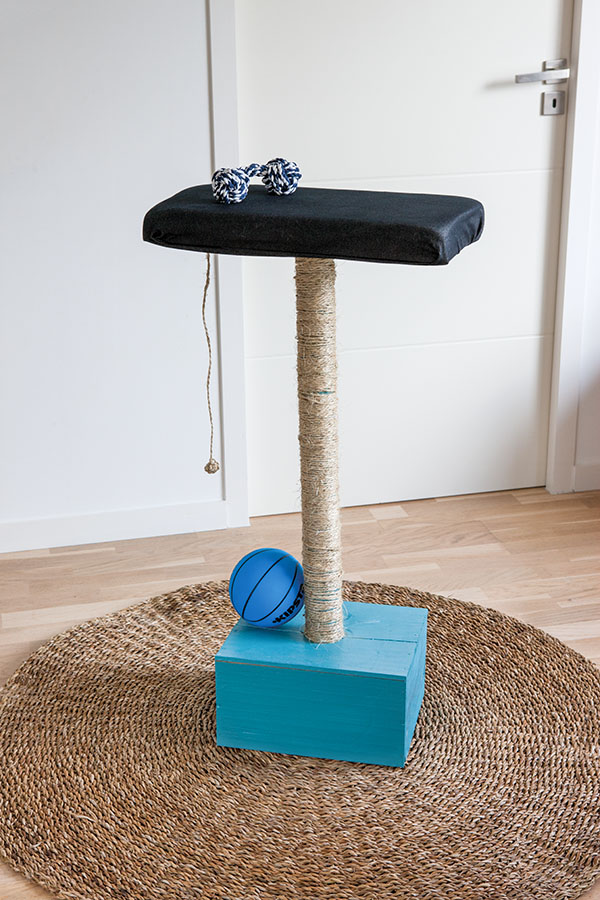 Lets face it: most cat trees are ugly, with their outdated blue plush upholstery and cardboard construction that absorbs humidity and odors. As for the price, a basic model can easily set you back $100. Heres an example of a simple cat tree that is perfect for a small apartment and wont clash with your dcor. Materials 1 wine crate 1 wooden tree stake, dowel, or PVC piping 1 board 1 screw About 100 ft (31 m) of cord Foam and fabric 3 long nails, about 6 in (15 cm) Concrete or mortar Paint (optional) Tools Hole saw (same diameter as the stake), or jigsaw Power drill/screwdriver Staple gun and staples Glue gun and glue Scissors Trowel or large wooden stick (to mix concrete) Pencil Making the base
Lets face it: most cat trees are ugly, with their outdated blue plush upholstery and cardboard construction that absorbs humidity and odors. As for the price, a basic model can easily set you back $100. Heres an example of a simple cat tree that is perfect for a small apartment and wont clash with your dcor. Materials 1 wine crate 1 wooden tree stake, dowel, or PVC piping 1 board 1 screw About 100 ft (31 m) of cord Foam and fabric 3 long nails, about 6 in (15 cm) Concrete or mortar Paint (optional) Tools Hole saw (same diameter as the stake), or jigsaw Power drill/screwdriver Staple gun and staples Glue gun and glue Scissors Trowel or large wooden stick (to mix concrete) Pencil Making the base  Turn the wine crate upside down and trace two diagonal lines across the base from corner to corner to locate the exact center.
Turn the wine crate upside down and trace two diagonal lines across the base from corner to corner to locate the exact center. 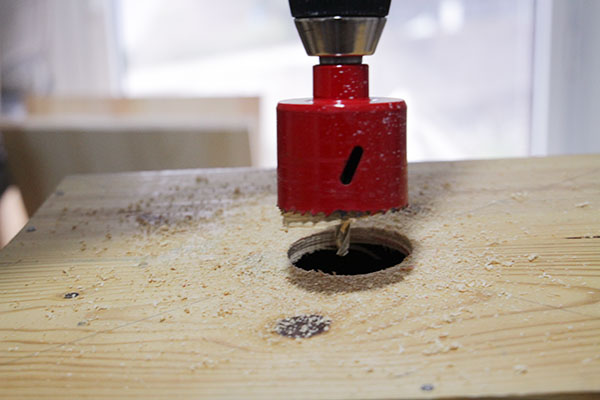 Using the hole saw, cut a hole in the center of the crate where the diagonal lines meet.
Using the hole saw, cut a hole in the center of the crate where the diagonal lines meet. 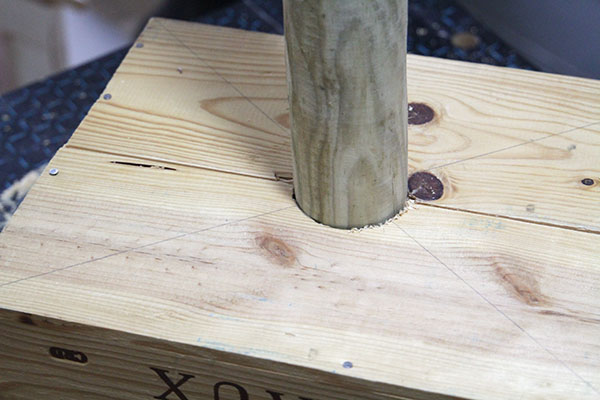 Mark where the stake will sit in the hole in order to start wrapping it with cord in the next stepyou dont want to wrap too much of the stake with cord and then have too little stake left to poke down into the crate.
Mark where the stake will sit in the hole in order to start wrapping it with cord in the next stepyou dont want to wrap too much of the stake with cord and then have too little stake left to poke down into the crate.  Mark where the stake will sit in the hole in order to start wrapping it with cord in the next stepyou dont want to wrap too much of the stake with cord and then have too little stake left to poke down into the crate.
Mark where the stake will sit in the hole in order to start wrapping it with cord in the next stepyou dont want to wrap too much of the stake with cord and then have too little stake left to poke down into the crate.
Insert the stake in the hole you have cut. If you want to paint the base of your cat tree, choose a color that blends in with your dcor, and paint the base now. Making the trunk 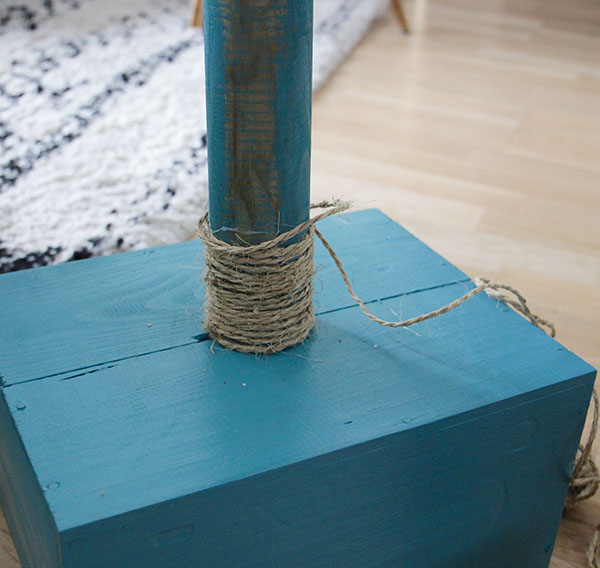 Wind the cord tightly and neatly around the stake and glue as you go, making sure to add glue at frequent, regular intervals.
Wind the cord tightly and neatly around the stake and glue as you go, making sure to add glue at frequent, regular intervals. 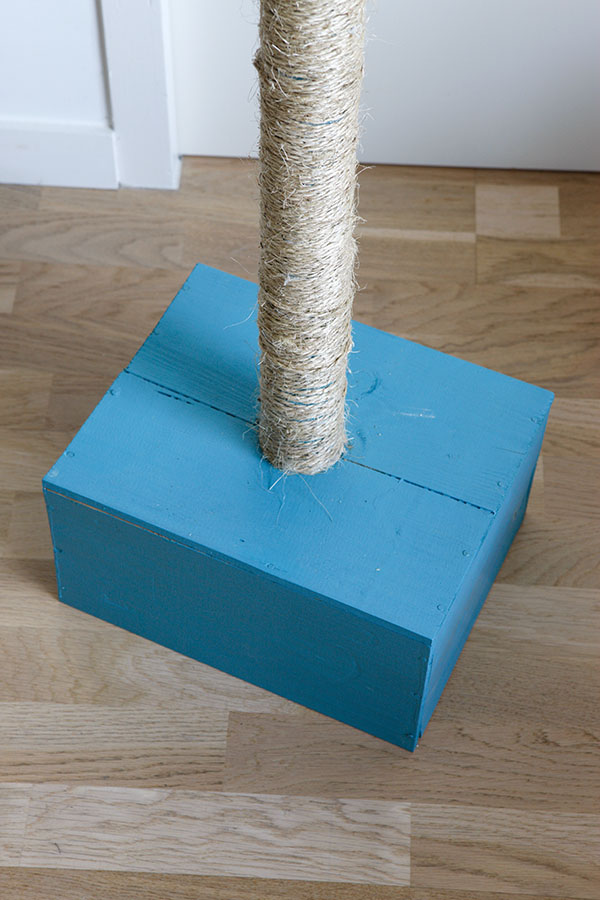 Do not put cord all the way at the top of the post. Also, for best results, we recommend winding a second layer of cord over the first layer. Making the top
Do not put cord all the way at the top of the post. Also, for best results, we recommend winding a second layer of cord over the first layer. Making the top 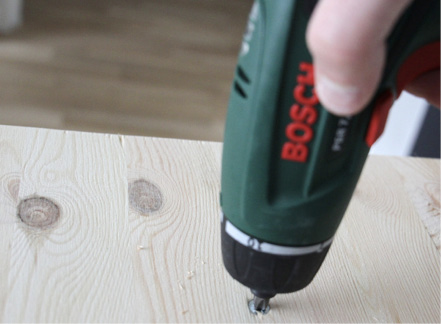 Find the center of the board by tracing two diagonal lines across it.
Find the center of the board by tracing two diagonal lines across it.
Screw the board to the top of the post, using the lines as a guide. 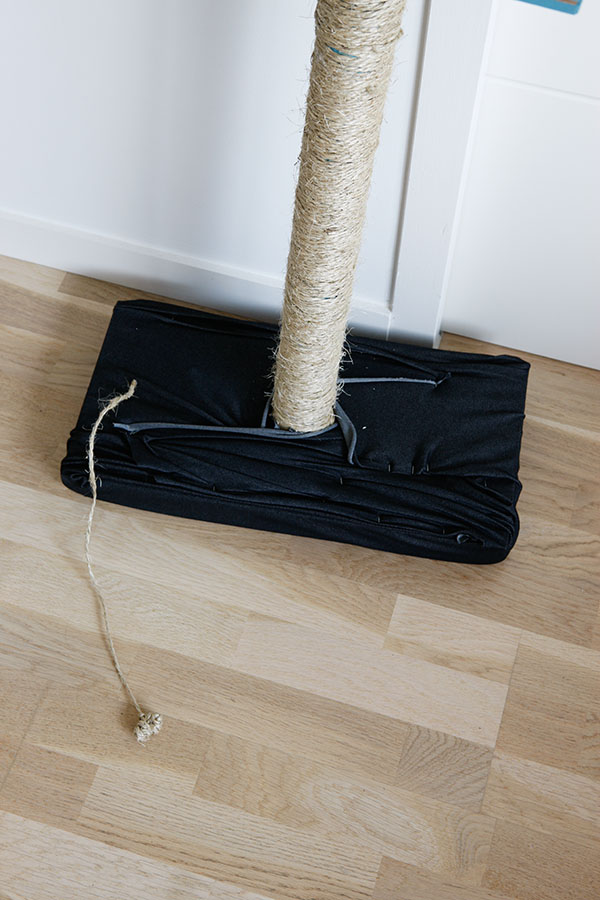 Glue the foam to the top of the board, cutting it to size as needed. Lay the fabric over the foam and staple it to the underside of the board. You can also staple a few long pieces of hanging cord to the underside to draw your cats attention to this new plaything. Finishing To stabilize the base, you need to fill the wine crate with concrete. For this project, we mixed up mortar, which is stickier.
Glue the foam to the top of the board, cutting it to size as needed. Lay the fabric over the foam and staple it to the underside of the board. You can also staple a few long pieces of hanging cord to the underside to draw your cats attention to this new plaything. Finishing To stabilize the base, you need to fill the wine crate with concrete. For this project, we mixed up mortar, which is stickier.
Whatever product you decide to use, follow the manufactures instructions for mixing.  Start by drilling a hole all the way through the stake, near the base where the stake emerges under the wine crate. Drill a hole on each side of the crate.
Start by drilling a hole all the way through the stake, near the base where the stake emerges under the wine crate. Drill a hole on each side of the crate. 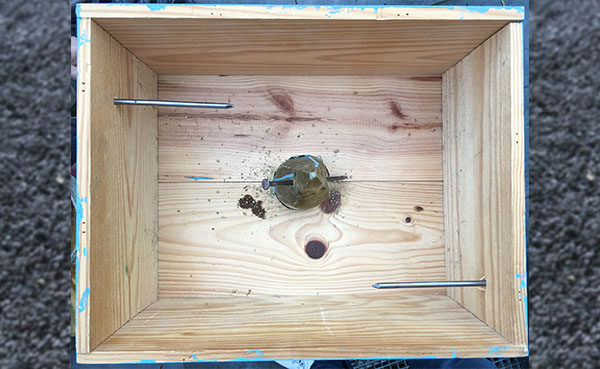 Slide long nails (the longest you can find) into the holes. These nails will help the mortar (or concrete) stay in place inside the crate.
Slide long nails (the longest you can find) into the holes. These nails will help the mortar (or concrete) stay in place inside the crate. 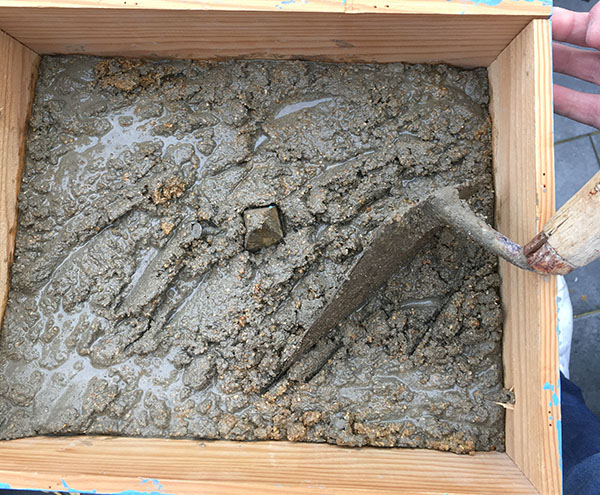 Half fill the crate with mortar with the stake in place.
Half fill the crate with mortar with the stake in place.  Half fill the crate with mortar with the stake in place.
Half fill the crate with mortar with the stake in place.
Lightly tap the sides of the crate to help air bubbles escape. Let the piece dry vertically, in a dry area, for 48 hours. 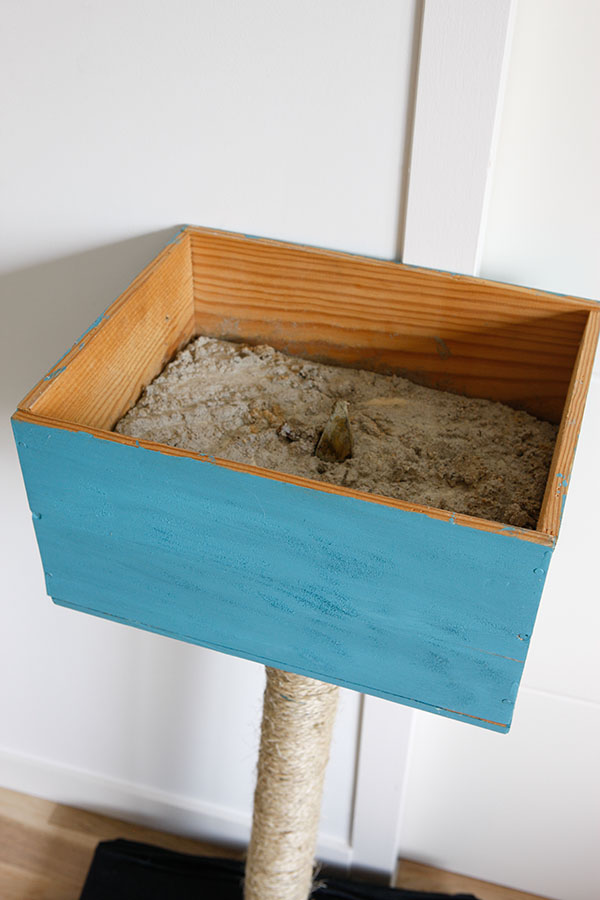 Do not fill the crate completely, or it wont support the weight of the mortar. Half full is sufficient.
Do not fill the crate completely, or it wont support the weight of the mortar. Half full is sufficient.  Multi-Dish Stand Difficulty
Multi-Dish Stand Difficulty 
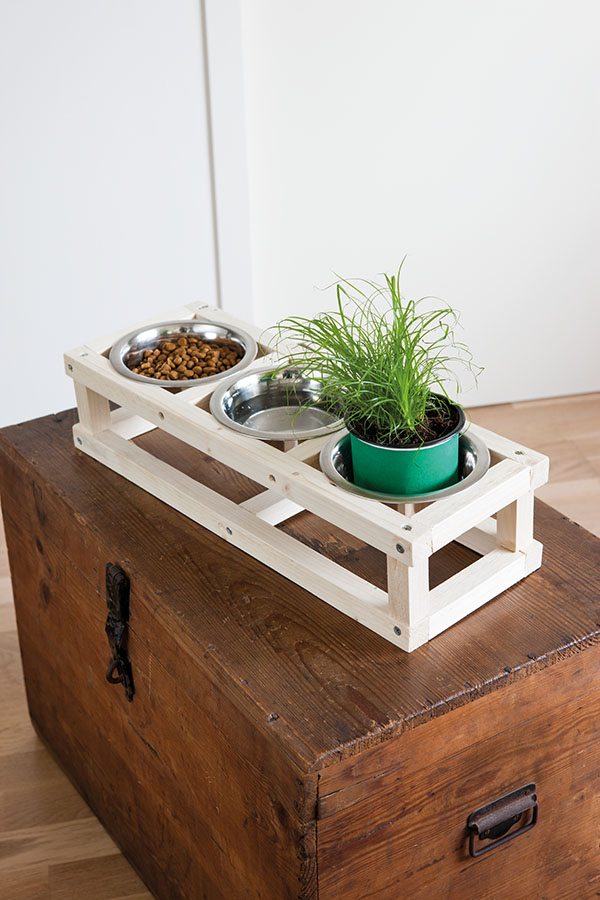 This practical stand makes it easy to keep all your cats dishes together and move them to another area all the same time. Its simple design will blend in easily with your dcor.
This practical stand makes it easy to keep all your cats dishes together and move them to another area all the same time. Its simple design will blend in easily with your dcor.
There is even a space for a cat-friendly potted plant! Materials 2 furring strips, 100 in (250 cm) long, 1 x 1 in (2.7 x 2.7 cm) wide About 30 screws Tools Wood saw Power drill/screwdriver Fine-grit sandpaper (or choose furring strips that have already been sanded) Tape measure Pencil Preparing the frame 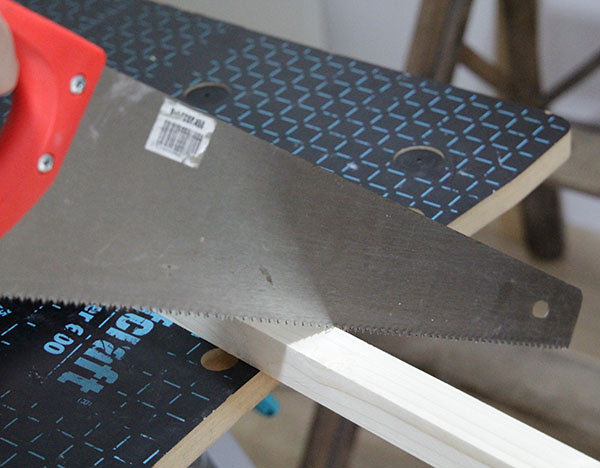 Cut the furring strips to the dimensions you need in order to create a piece that follows the structure shown in the photos and that fits your cats dishes.
Cut the furring strips to the dimensions you need in order to create a piece that follows the structure shown in the photos and that fits your cats dishes. 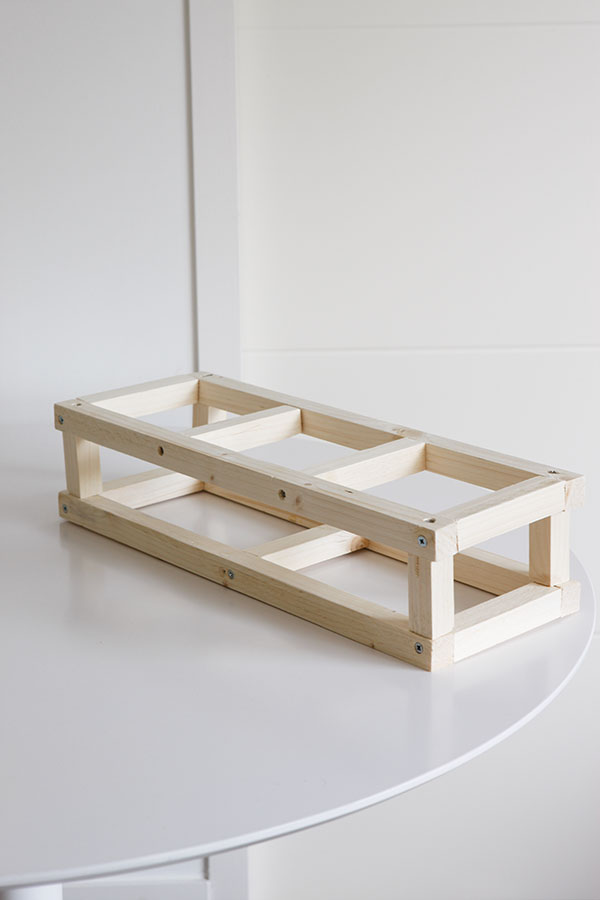 Make a plan, detailing and calculating all the measurements and taking into account the widths of the furring strips and the rims of the dishes, as well as their depth. Taking careful measurements now will help save you time during construction. It will also help you avoid mistakes and waste materials, which will save you money! Use the photo of the assembled frame here to guide you in drawing up the plan.
Make a plan, detailing and calculating all the measurements and taking into account the widths of the furring strips and the rims of the dishes, as well as their depth. Taking careful measurements now will help save you time during construction. It will also help you avoid mistakes and waste materials, which will save you money! Use the photo of the assembled frame here to guide you in drawing up the plan. 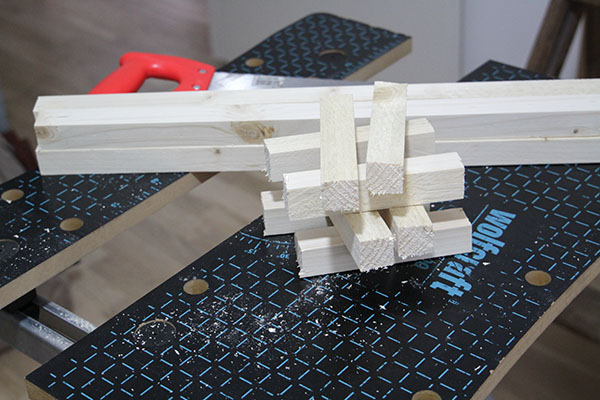 Cut out all the pieces at the start. You can use the first piece as a template, to save time cutting and to avoid having to take out the tape measure every few seconds.
Cut out all the pieces at the start. You can use the first piece as a template, to save time cutting and to avoid having to take out the tape measure every few seconds.
Next page
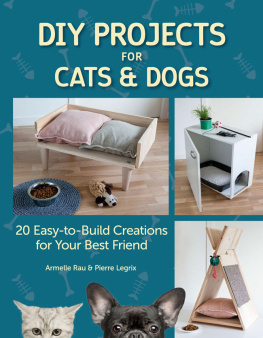





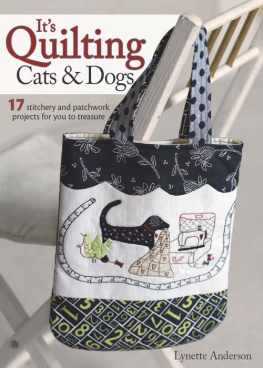

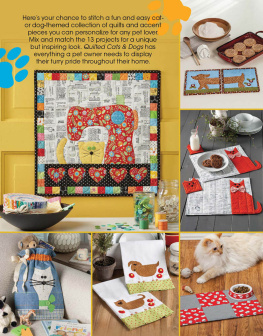
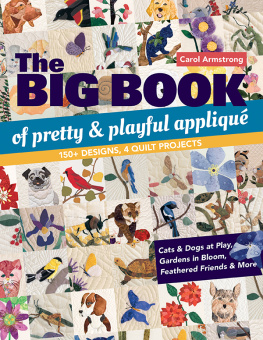



 Cat Tree Difficulty
Cat Tree Difficulty 
 Lets face it: most cat trees are ugly, with their outdated blue plush upholstery and cardboard construction that absorbs humidity and odors. As for the price, a basic model can easily set you back $100. Heres an example of a simple cat tree that is perfect for a small apartment and wont clash with your dcor. Materials 1 wine crate 1 wooden tree stake, dowel, or PVC piping 1 board 1 screw About 100 ft (31 m) of cord Foam and fabric 3 long nails, about 6 in (15 cm) Concrete or mortar Paint (optional) Tools Hole saw (same diameter as the stake), or jigsaw Power drill/screwdriver Staple gun and staples Glue gun and glue Scissors Trowel or large wooden stick (to mix concrete) Pencil Making the base
Lets face it: most cat trees are ugly, with their outdated blue plush upholstery and cardboard construction that absorbs humidity and odors. As for the price, a basic model can easily set you back $100. Heres an example of a simple cat tree that is perfect for a small apartment and wont clash with your dcor. Materials 1 wine crate 1 wooden tree stake, dowel, or PVC piping 1 board 1 screw About 100 ft (31 m) of cord Foam and fabric 3 long nails, about 6 in (15 cm) Concrete or mortar Paint (optional) Tools Hole saw (same diameter as the stake), or jigsaw Power drill/screwdriver Staple gun and staples Glue gun and glue Scissors Trowel or large wooden stick (to mix concrete) Pencil Making the base  Turn the wine crate upside down and trace two diagonal lines across the base from corner to corner to locate the exact center.
Turn the wine crate upside down and trace two diagonal lines across the base from corner to corner to locate the exact center.  Using the hole saw, cut a hole in the center of the crate where the diagonal lines meet.
Using the hole saw, cut a hole in the center of the crate where the diagonal lines meet.  Mark where the stake will sit in the hole in order to start wrapping it with cord in the next stepyou dont want to wrap too much of the stake with cord and then have too little stake left to poke down into the crate.
Mark where the stake will sit in the hole in order to start wrapping it with cord in the next stepyou dont want to wrap too much of the stake with cord and then have too little stake left to poke down into the crate.  Wind the cord tightly and neatly around the stake and glue as you go, making sure to add glue at frequent, regular intervals.
Wind the cord tightly and neatly around the stake and glue as you go, making sure to add glue at frequent, regular intervals.  Do not put cord all the way at the top of the post. Also, for best results, we recommend winding a second layer of cord over the first layer. Making the top
Do not put cord all the way at the top of the post. Also, for best results, we recommend winding a second layer of cord over the first layer. Making the top  Find the center of the board by tracing two diagonal lines across it.
Find the center of the board by tracing two diagonal lines across it. Glue the foam to the top of the board, cutting it to size as needed. Lay the fabric over the foam and staple it to the underside of the board. You can also staple a few long pieces of hanging cord to the underside to draw your cats attention to this new plaything. Finishing To stabilize the base, you need to fill the wine crate with concrete. For this project, we mixed up mortar, which is stickier.
Glue the foam to the top of the board, cutting it to size as needed. Lay the fabric over the foam and staple it to the underside of the board. You can also staple a few long pieces of hanging cord to the underside to draw your cats attention to this new plaything. Finishing To stabilize the base, you need to fill the wine crate with concrete. For this project, we mixed up mortar, which is stickier. Start by drilling a hole all the way through the stake, near the base where the stake emerges under the wine crate. Drill a hole on each side of the crate.
Start by drilling a hole all the way through the stake, near the base where the stake emerges under the wine crate. Drill a hole on each side of the crate.  Slide long nails (the longest you can find) into the holes. These nails will help the mortar (or concrete) stay in place inside the crate.
Slide long nails (the longest you can find) into the holes. These nails will help the mortar (or concrete) stay in place inside the crate.  Half fill the crate with mortar with the stake in place.
Half fill the crate with mortar with the stake in place.  Do not fill the crate completely, or it wont support the weight of the mortar. Half full is sufficient.
Do not fill the crate completely, or it wont support the weight of the mortar. Half full is sufficient.  Multi-Dish Stand Difficulty
Multi-Dish Stand Difficulty  This practical stand makes it easy to keep all your cats dishes together and move them to another area all the same time. Its simple design will blend in easily with your dcor.
This practical stand makes it easy to keep all your cats dishes together and move them to another area all the same time. Its simple design will blend in easily with your dcor. Cut the furring strips to the dimensions you need in order to create a piece that follows the structure shown in the photos and that fits your cats dishes.
Cut the furring strips to the dimensions you need in order to create a piece that follows the structure shown in the photos and that fits your cats dishes.  Make a plan, detailing and calculating all the measurements and taking into account the widths of the furring strips and the rims of the dishes, as well as their depth. Taking careful measurements now will help save you time during construction. It will also help you avoid mistakes and waste materials, which will save you money! Use the photo of the assembled frame here to guide you in drawing up the plan.
Make a plan, detailing and calculating all the measurements and taking into account the widths of the furring strips and the rims of the dishes, as well as their depth. Taking careful measurements now will help save you time during construction. It will also help you avoid mistakes and waste materials, which will save you money! Use the photo of the assembled frame here to guide you in drawing up the plan.  Cut out all the pieces at the start. You can use the first piece as a template, to save time cutting and to avoid having to take out the tape measure every few seconds.
Cut out all the pieces at the start. You can use the first piece as a template, to save time cutting and to avoid having to take out the tape measure every few seconds.